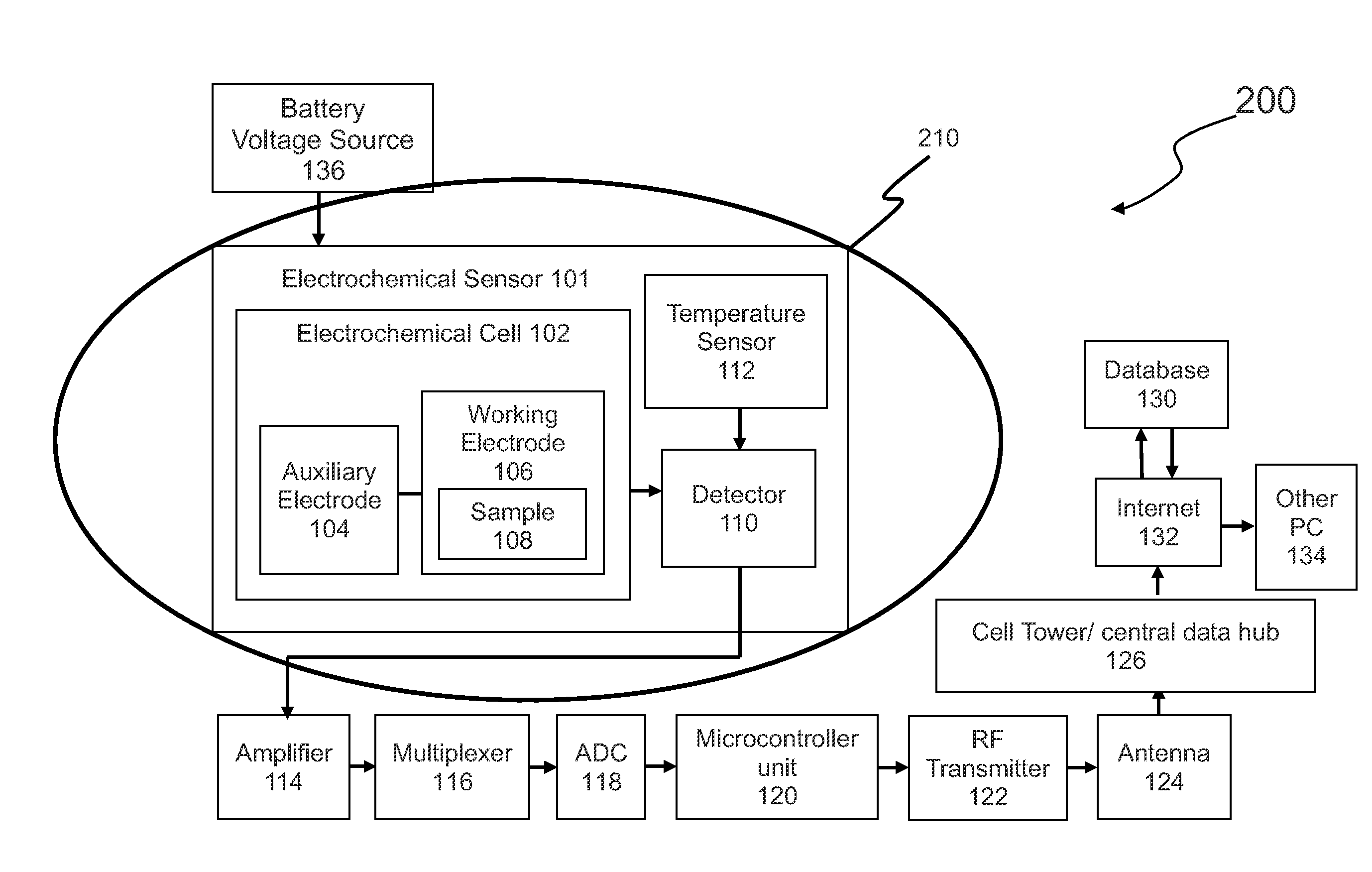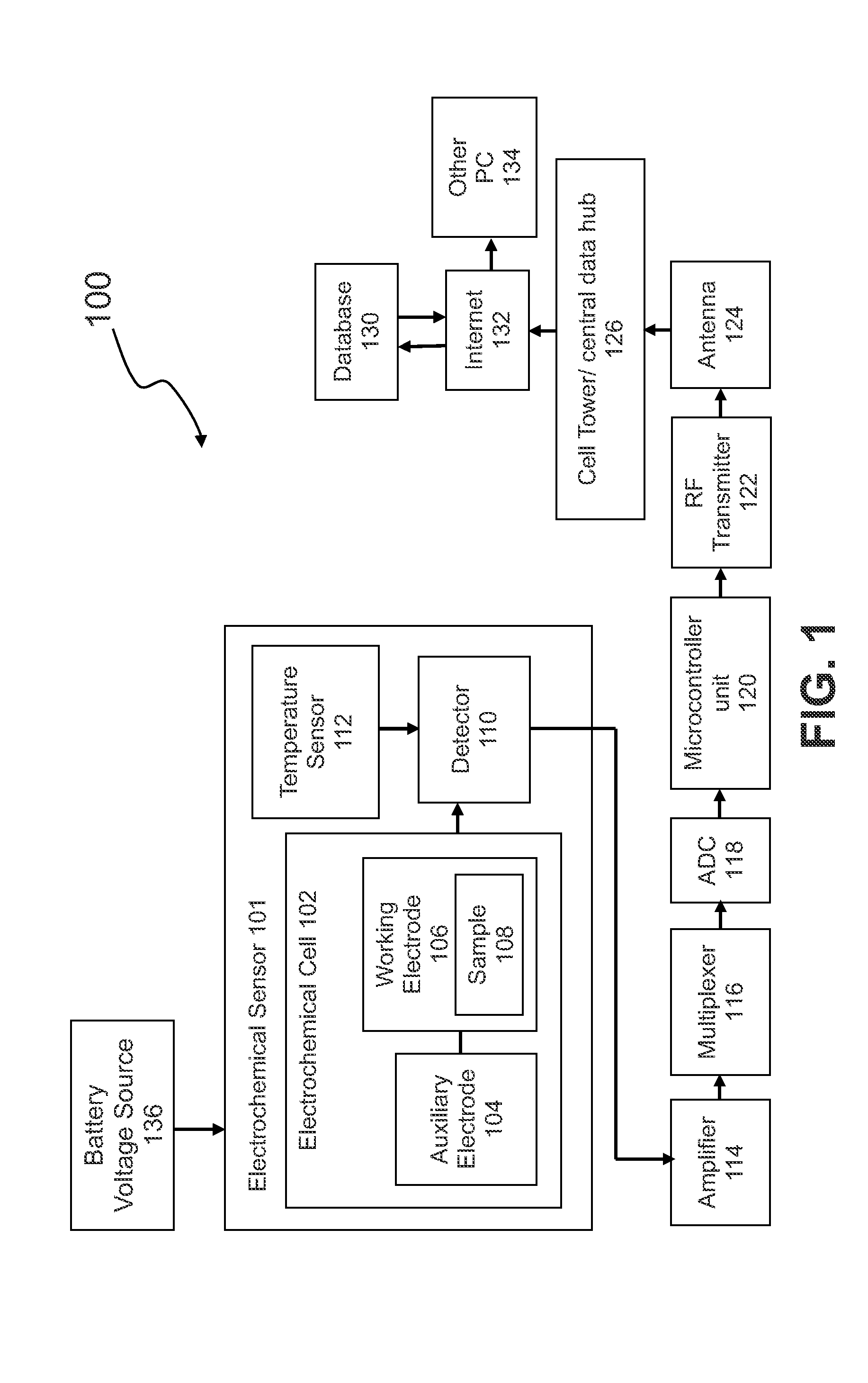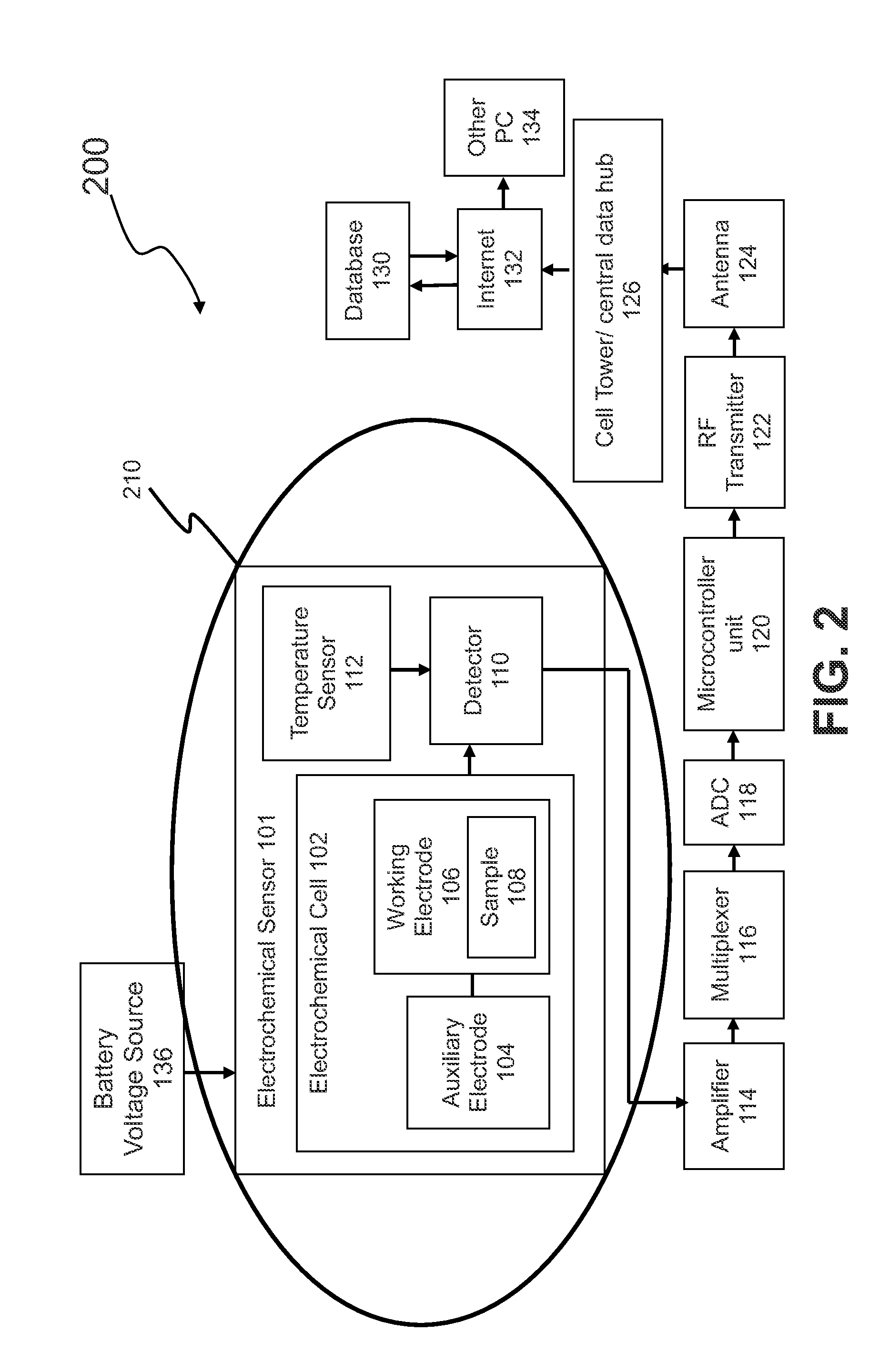Electrochemical Amperometry-Based Sensor Combined With Long-Range Radio Communication For Measurement Of Analytes
a technology of amperometry and analytes, applied in the field of electrochemical sensors, can solve problems such as inaccurate analytical results, and achieve the effects of avoiding heat generation and temperature rise, preventing thermal energy from reaching the temperature sensor, and avoiding inaccurate analytical results
- Summary
- Abstract
- Description
- Claims
- Application Information
AI Technical Summary
Benefits of technology
Problems solved by technology
Method used
Image
Examples
embodiment 300
[0025]Because the high frequency radiation interference comes from the antenna electrically connected to the sensor for transmitting digital signal in the form of radio wave. A fundamental solution to minimize high frequency radiation is to stop transmission of radio wave when the electrochemical measurement is performed. Therefore, another preferred embodiment 300 is to set up a controller 138 between the electrochemical sensor 101 and the antenna 124 as disclosed in FIG. 3. The controller 138 may be placed in other locations between the electrochemical sensor 101 and the antenna 124. When the electrochemical sensor 101 is conducting an electrochemical measurement of a sample, the controller 138 will deactivate the antenna 124 emission, and thus the electrochemical measurement will not be interfered by the radio frequency. After the measurement is completed, the controller 138 will reactivate the antenna 124.
[0026]Alternatively, the antenna emission may also be controlled by a circ...
embodiment 400
[0028]In order to accurately provide a correction factor the temperature sensor should not be affected by the heat generated from battery recharge or radio circuitry or other sources of heat. Therefore, the temperature sensor 112 for the electrochemical sensors 101 (amperometric sensors) may be located at a ventilated portion of the amperometric sensor enclosure 113. The temperature sensor 112 may be installed at a location outside of the amperometric sensor enclosure 113 in an alternate embodiment 400 as disclosed in FIG. 4. The temperature sensor 112 may be located at a probe located outside the enclosure 113.
[0029]Usually recharging of a battery using a battery charger potentially produces thermal energy affecting accuracy of electrochemical analysis. A fundamental approach to control thermal interference is to reduce heat generated by charging of a battery. Set up and arrangement of temperature control battery recharge is a technology known to those with ordinary skill in the ar...
embodiment 500
[0031]As shown in FIG. 5, the embodiment 500 to control the thermal interference caused by battery charging includes a temperature monitor 144 which may have a temperature sensor 146, such as a thermistor. Temperature monitor 144 may continuously (or periodically) monitor the temperature associated with battery 138. The embodiment will also include control software 148 and controller 150 for controlling battery charger 142. The control software 148 has user interface for user to input the target temperature and cut off values. Control software 148 controls the operation of controller 150 based on temperature information collected from temperature monitor 144 and target temperature and cutoff set in the software 148 to control the current supplied from the battery charger 142 to the battery 136 via an integrated circuit in the controller 150. The software 148 determines when the supplied current matches a value corresponding to the cutoff parameter and stops further supply of the sup...
PUM
| Property | Measurement | Unit |
|---|---|---|
| temperature | aaaaa | aaaaa |
| electrical current | aaaaa | aaaaa |
| frequency | aaaaa | aaaaa |
Abstract
Description
Claims
Application Information
 Login to View More
Login to View More - R&D
- Intellectual Property
- Life Sciences
- Materials
- Tech Scout
- Unparalleled Data Quality
- Higher Quality Content
- 60% Fewer Hallucinations
Browse by: Latest US Patents, China's latest patents, Technical Efficacy Thesaurus, Application Domain, Technology Topic, Popular Technical Reports.
© 2025 PatSnap. All rights reserved.Legal|Privacy policy|Modern Slavery Act Transparency Statement|Sitemap|About US| Contact US: help@patsnap.com



